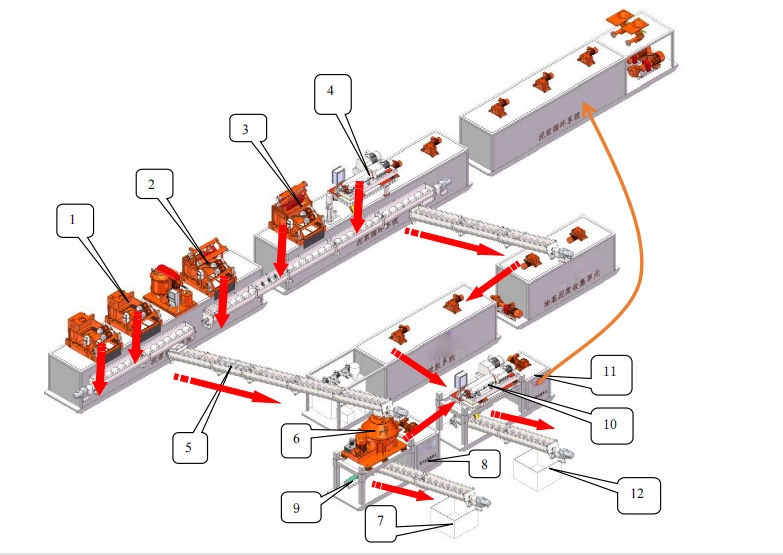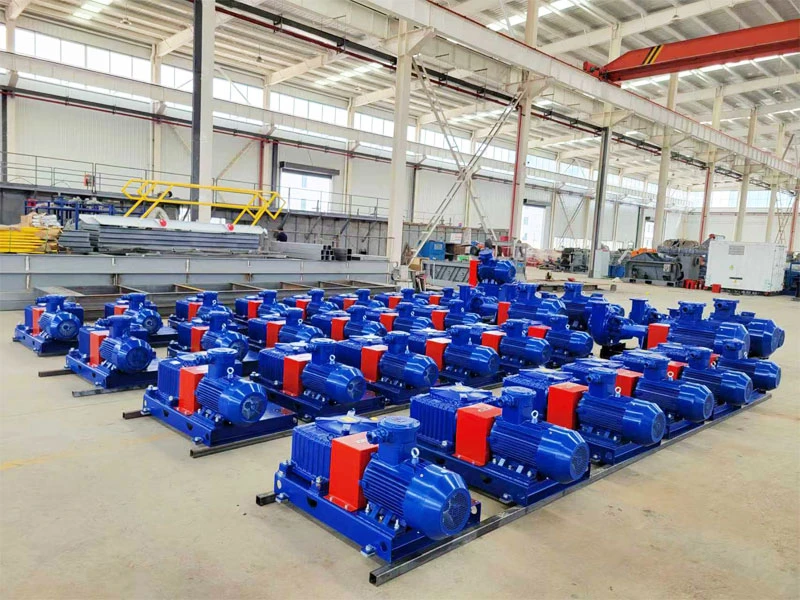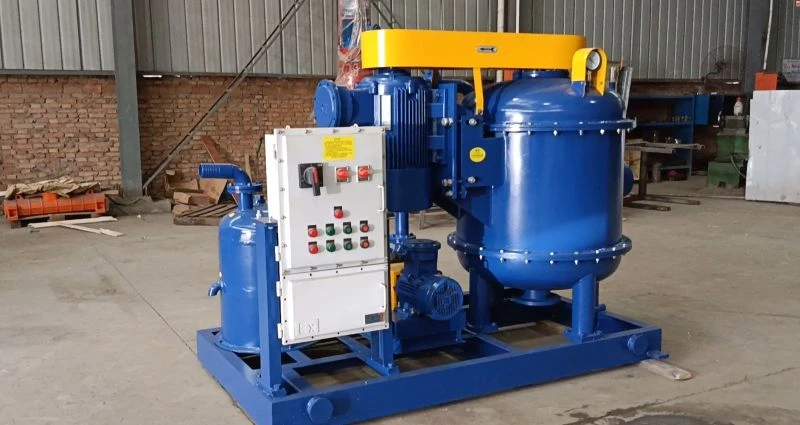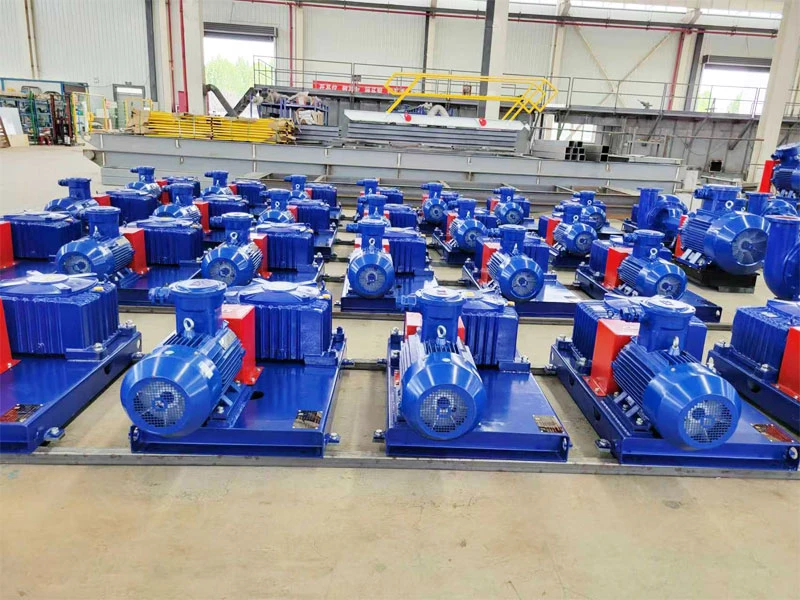Arbeitsprinzip eines vertikalen Spänetrockners
Oilfield professionals are familiar with vertikale Spänetrockner, which are used to process oil-based mud without dropping it onto the floor. So, what is the working principle and workflow of a vertical cuttings dryer? Today, HL’s sales staff will provide a brief introduction. For a more in-depth understanding of drill cuttings dryers, please contact our technicians.
Vertical cuttings dryers utilize centrifugal separation to separate the solid and liquid phases of drill cuttings. Depending on the customer’s desired particle size, we select screen baskets with varying slits; the slit range is 0.25 to 0.5 mm.

1. Shale shaker 2. Desander 3. Desilter 4. Centrifuge 5. Screw conveyor 6. Vertical cuttings dryer 7. Cuttings processed by the cuttings dryer 8. Cuttings box 9. Slurry pump 10. Centrifuge 11. Treated mud 12. Cuttings processed by the centrifuge
The drilling fluid discharged from the wellhead passes through the shale shaker (1), desander (2), desilter (3), and centrifuge (4). The screw conveyor (5) then transports it to the dryer (6) for further processing. The dryer (7) directly discharges the solids, and the recovered drilling fluid enters the slurry storage tank (8). The slurry pump (9) feeds the drilling fluid in the storage tank to the centrifuge (10) for further separation. The treated liquid phase (11) returns to the drilling fluid circulation system, while the centrifuge directly discharges the solids (12).
Xi’an HL Petroleum Equipment Co., Ltd. has a mud prevention system (water-based mud prevention and oil-based mud prevention). Customers with this need can contact our sales manager.


